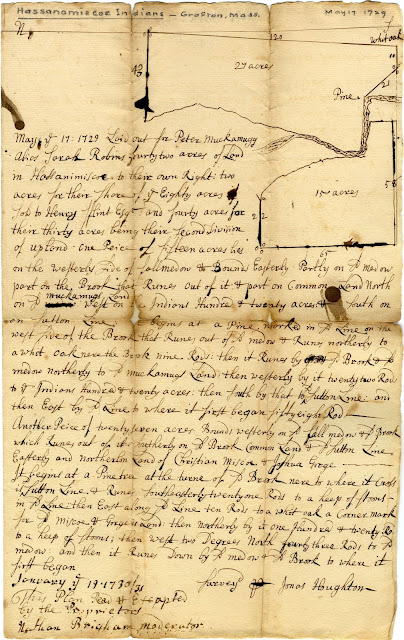Battle of Great Falls or Massacre at Peskeompskut
 |
| Looking north along the Connecticut River at Turners Falls |
Both Native leaders and the the English authorities were at rest from the conflicts of the King Philip's War. Talks of peace had been ongoing for several months. The weary Nipmuc, Narragansett, and Pocumtuc warriors that had accompanied the families to the Falls gathered in nearby, separate camps.
Meanwhile, soldiers, residents and even the clergy occupying nearby Hadley, Massachusetts grew increasingly frustrated with the recent peace talks. Many were displaced from battles with Philip's men in Greenfield and Deerfield and wished to retaliate. After Native warriors raided nearby Hatfield and carried off cattle, Captain William Turner, commander of the Hadley garrison, decided to take action despite the instructions from his superiors.
Turner led more than 150 men on the 25 mile ride from Hadley to (what is now the town of) Gill. They gathered on the hill above the camp containing the families there to gather fish. The soldiers rushed down the hill and slaughtered the elders, women and children still sleeping in the early morning light. The noise of the assault woke the Native warriors camped nearby. The warriors gave chase to the English soldiers fleeing downriver but killed relatively few. Captain Turner was among those that perished and as a reward for his role in the deaths of those families, the area is now known as Turners Falls.
This one act was a turning point in King Philips War. By August of 1676, Metacomet (King Philip) was dead. Fighting continued in Northern New England until 1678 but Metacomet's death effectively ended the war in southern New England. Native survivors who participated in the fighting were either executed or sold into slavery. Native families dispersed, some going north to shelter with tribes up there. Others returned to their homelands where their descendants still remain.
 |
| The view across the Connecticut River. This is the likely area of the fishing camp. |
I realize that this rendition of "The Battle of Great Falls" is a bit biased. But it is how I view the destruction of not only lives but an entire lifestyle. A way of life that had lasted for thousands of years before the coming of the English.
Until next time.
Aquene,
Cher

Quyanaqpaq- Thank you.
ReplyDeleteGreat post, thank you.
ReplyDeleteThere is a lot of work going on in town to try to heal the wounds. The attack has been recognized for what it was. I think progress is being made.
ReplyDeleteMy father's mother was a Hadley-area Dickinson; I do considerable genealogy, and know that I'm descended from or related to many, many Connecticut River valley early white settlers, including many of the attackers in this massacre (my father and I thought to check last Christmas, and found 3 known ancestors out of the first six listed names of participants.)
ReplyDeleteI can't call yours a biased account; I'm entirely sick of the truly biased, self-aggrandizing and romanticized accounts written by my ancestors and their other descendants. Yours is simply given from the -- usually missing -- Native American point of view.
-- Patricia J. Hawkins
When I drive from Greenfield to Deerfield, I pray. I know they hear me.
ReplyDelete